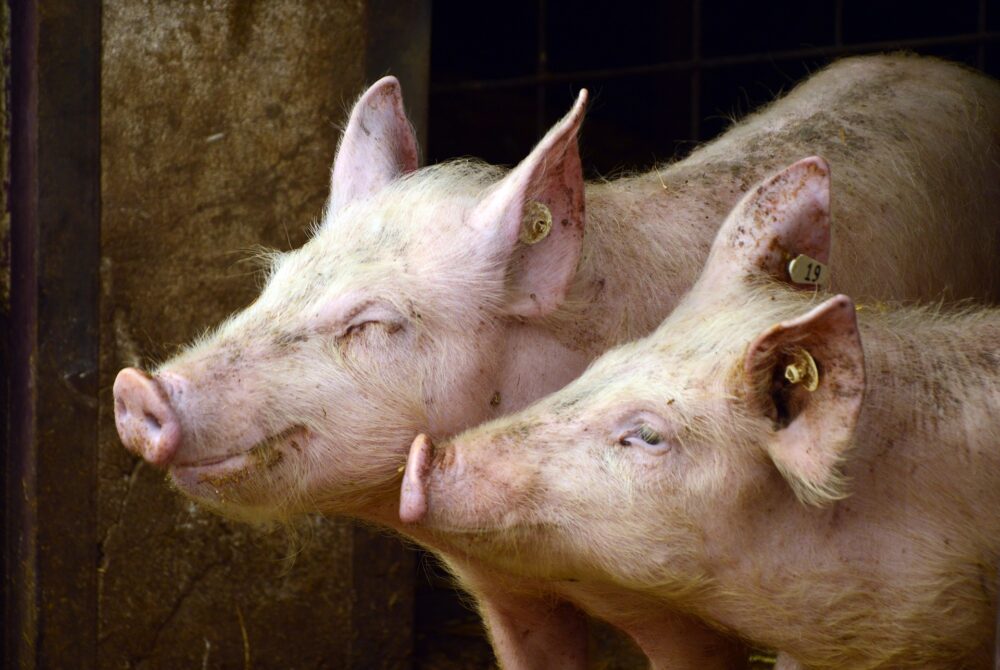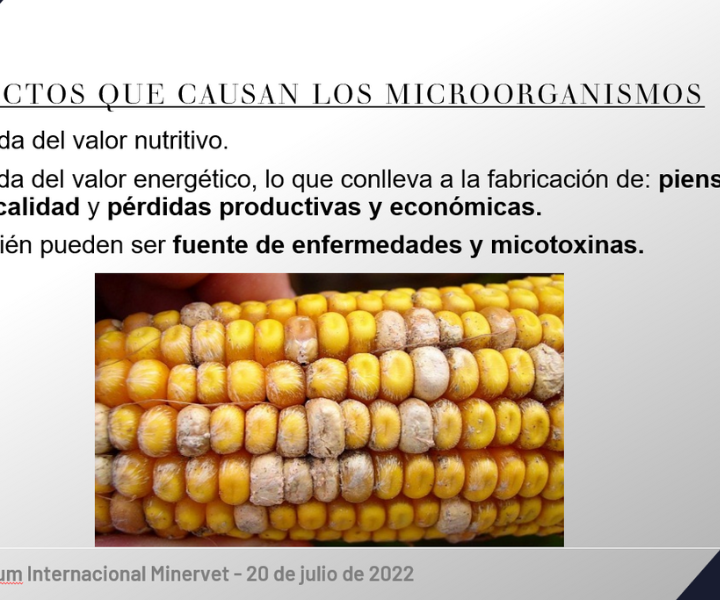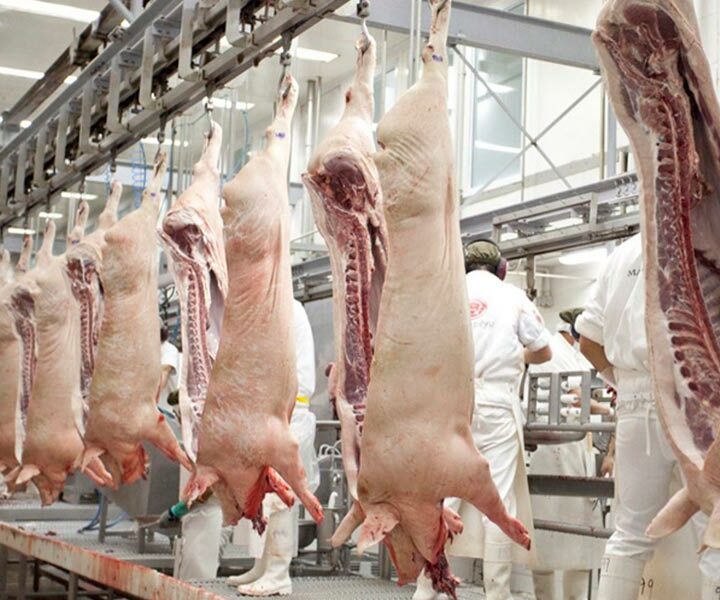
MINERVET S.A. in the Bolivian market
2 de March de 2020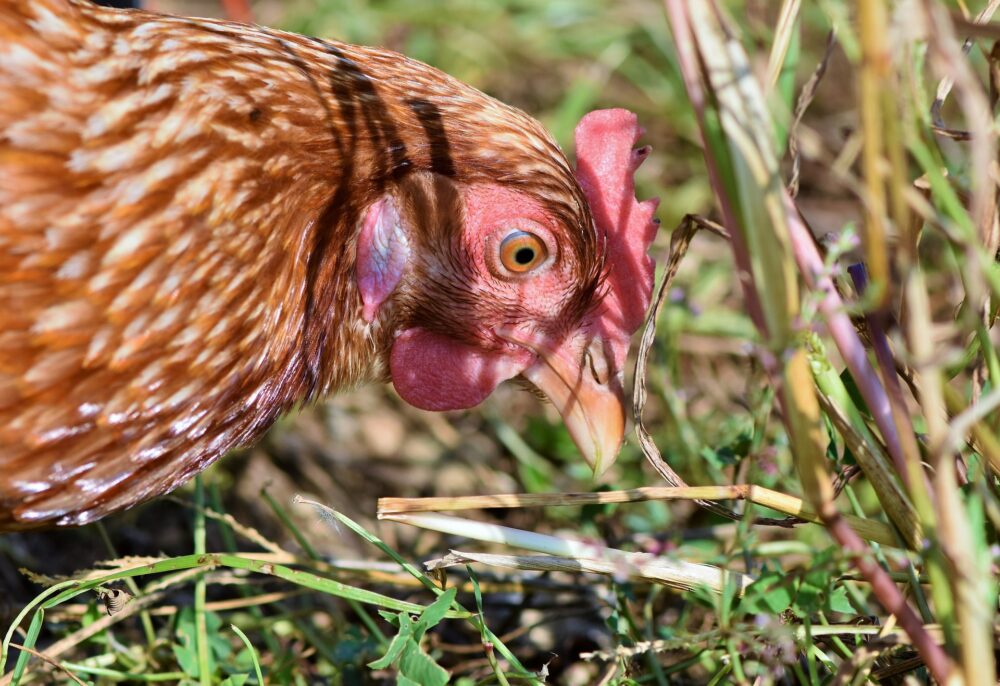
Foodborne digestive mycosis and the influence of inappropriate use of antibiotics
15 de June de 2020Mycotoxins are low molecular weight chemical compounds generated as secondary toxic metabolites by a wide range of fungi. These microorganisms belong to the phylum Ascomycota, commonly known as moulds, particularly the genera Fusarium, Penicillium, Alternaria and Claviceps, among others. Mycotoxins are substances which, when incorporated in low quantities, have implications for human and animal health, causing chronic and acute diseases.
According to the species, a fungus may be capable of producing a single as well as multiple toxins simultaneously. Feed contamination is particularly subject to temperature and humidity conditions, where the hottest and most humid regions are usually the most prevalent in this problem. In addition, pH, water activity, nutrients, type of substrate, physiological state of the plant, and microbial interactions are other factors that determine the concentrations of inocula in feed. In general, temperature between 10 and 40°C, pH 8.4, humidity greater than 40%, and water activity of 0.70 are the conditions in which fungi usually develop, although their active growth in the field (mycelium development phase) is optimized with temperature between 20 and 25°C, humidity greater than 70% and water activity greater than 0.85.
It is important to mention that mycotoxins can grow on feed at different times. It is estimated that about 22% develop in the pre-harvest stage, when feed maintains higher moisture concentration. The rest can be generated in the post-harvest stages, such as drying, transport and storage.
There are approximately 400 compounds identified as mycotoxins, although only a small proportion currently receive special attention in animal production. Their detection requires sampling and laboratory processing with technology of varying complexity (analytical and agglutination techniques), since they cannot be identified with the naked eye, nor do they present color or organoleptic characteristics that make them detectable in the raw materials. Feed grains that are usually affected by molds, ranked according to their incidence, are: corn, wheat, barley, rye and soybeans.
Effect of mycotoxins in swine feed
In Latin America, pig diets are implemented based on a varied integration of cereals, where the main ingredient is corn, accompanied by soybeans or other cereals such as wheat, oats or barley. Coincidentally, the raw materials composing the rations present the highest prevalence of mycotoxin contamination. These grains are equally used in the feeding of nulliparous sows, multiparous sows and fattening piglets. Therefore, the effect of mycotoxins has an impact on adequate and economically viable production.
Among the mycotoxins frequently found in feed materials for pigs that are important for their adverse effects globally are the following:
- Aflatoxins: Mycotoxins produced by fungi of the genus Aspergillus. The most prevalent species in South America is A. flavus. This mycotoxin presents more than 20 varieties, being the most frequent types AFB1>AFB2>AFG1>AFG2. These compounds are categorized as carcinogenic substances by the IARC (International Agency for Research on Cancer). In pigs, in addition to their hepatocarcinogenic and hepatotoxic effect, they also have mutagenic and teratogenic activity. In piglets, they can produce a decrease in the absorption of nutrients with a decline in weight gain. Levels higher than 800 ppm can lead to piglets with low birth weight and alter early embryonic development due to oxidative stress and DNA damage. In chronic exposure, signs of jaundice, petechiae in the liver, fat degeneration processes, cirrhosis, fibrosis and centrilobular necrosis are often found.
- Ochratoxins: Mycotoxins produced by fungi of the genus Aspergillus and Penicillium. This mycotoxin presents three varieties: A, B and C, where the first one is commonly found in raw materials destined to animal feeding. IARC classifies these compounds as possibly carcinogenic. In pigs, effects of nephrotoxicity, genotoxicity, embryotoxicity, teratogenesis, subfertility in males and immunosuppression have been observed. In in-vitro tests, the maturation of sow’s oocytes has also been delayed by exposure.
- Fumonisins: Mycotoxins produced by fungi of the genus Fusarium, although Aspergillus niger has also been identified as another major source. It is classified into four groups (A, B, C and P) and is considered as a possible carcinogen by the IARC. The most predominant is subtype FB1, which is found in approximately 70% of the raw materials analyzed. Multiple effects have been detected in pigs: Evident pulmonary edema under acute intoxication, given by levels higher than 1000 ppm; immunosuppression by affecting cytokine mechanisms in conditions of subacute exposure; effects leading to subfertility and an increase in the permeability to pathogens and a reduction in nutrient absorption at the intestinal barrier level.
- Trichothecenes: Mycotoxins produced by several fungus genera: Fusarium, Trichoderma, and Trichothecium, among others. It has four classification groups, with its most toxic forms represented by group A (T-2 and HT-2) and group B (Nivalenol, Deoxynivalenol/Vomitoxin and Fusarenon X). The T-2 variant and its derived metabolites have been associated with findings of necrotizing-ulcerative bleeding from the gastrointestinal tract, vomiting, shock and death under acute intoxication conditions. Under chronic exposure, immunosuppressive effects and retarded growth and weight gain have been observed. The DON variant has historically been one of the most prevalent mycotoxins in raw materials worldwide. Its action is linked to the inhibition of protein synthesis, and in pigs it manifests itself with signs of vomiting, diarrhoea, abdominal distention and reduced weight gain associated with anorexia. As the intestinal barrier is compromised, the action of this mycotoxin is frequently related to effects caused by secondary pathogens. In relation to reproduction, trichothecenes are associated with sub-fertility events generated by delayed oocyte maturation and viability, endocrine disruption, and effects on embryonic development, with the birth of piglets with reduced body weight and length.
- Zearalenone: Mycotoxins produced by fungi of the genus Fusarium. Based on phase 1 biotransformations induced in the animal liver, up to 16 different metabolites are obtained, with alpha-zearalenone as the one with the highest oestrogenic potential in pigs. These animals are highly sensitive to the effect of this group of mycotoxins. IARC classifies them as possibly carcinogenic. In gilts, zearalenone act as endocrine disruptors of oestrogens, causing subfertility, delayed puberty manifestation, prolongation of the oestrus cycle, pseudopregnancy, hypoestrogenism, abortion, reduction of litter size and increase in the number of reproducers with repeats. In males, we have seen effects of feminization, decreased libido, and reduced sperm quality and reproductive capacity. In newborn piglets, an increase in mortality rate and signs of edema in the uterine, vulvar, perineal, abdominal, and umbilical region have been documented, which may be accompanied by nipple necrosis and vaginal and/or rectal prolapse.
- Emerging mycotoxins: Current data on raw materials have determined that most contaminations are caused by a combination of various mycotoxins. Compounds are currently being tested, and there is little information on their direct effect on pigs. Some mycotoxins frequently found, but scarcely described, are: ennianthines, butenolide, beauvericin, moniliformin, fusaproliferin, culmorin, fusaric acid, sterigmatocystin, emodin, alternariol and mycophenolic acid, among others. The mentioned co-contamination is implied in the potential additive and synergistic effects of these toxicants, which could increase and amplify their harmful effects in pigs, compared to those expected by the action of a single mycotoxin, as mentioned above.
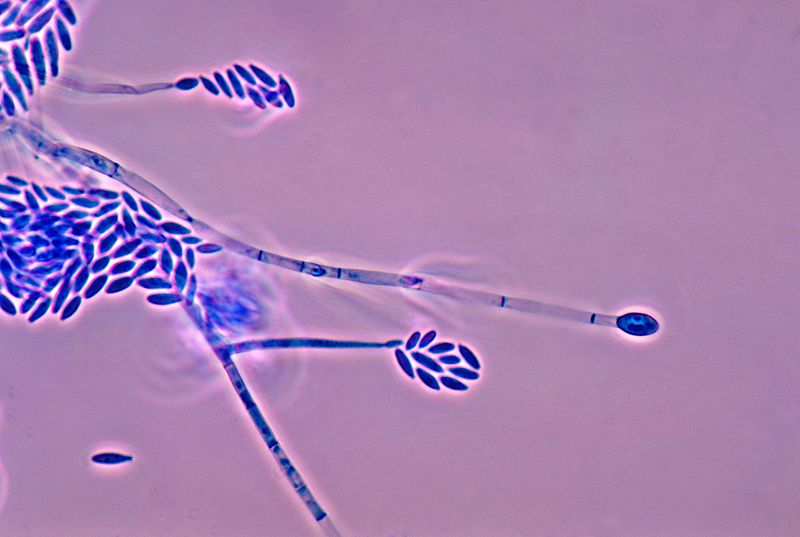
Current estimates on mycotoxins in raw materials from Latin America
Several studies carried out over the last year (2019) determined that all the mycotoxins mentioned in this article (aflatoxins, ochratoxins, fumonisins, DON, T-2 and zearalenone) were found in corn and other cereals that constitute the raw materials used for feeding pigs, which implies that mycotoxicosis still remains one of the main current problems to be considered in animal nutrition. On a Latin American scale, Central American countries reported the highest rates of contaminated feeds with concentrations above acceptable limits (between 75 and 100%), while South American countries reported lower rates. As a reference, acceptable values set for the various mycotoxins are: Aflatoxin up to 20 ppb; Ochratoxin up to 250 ppb; Fumonisin up to 20000 ppb; T-2 up to 500 ppb; DON up to 1800 ppb and Zearalenone up to 1000 ppb.
Corn, as already mentioned, is the most important ingredient of the diets of pigs and birds in Latin America. Among the samples analyzed for this cereal, 90% were determined to be contaminated with fumonisin, followed by 56% contaminated with DON. The rest of the mycotoxins were found to be present at levels below 30% of the samples. However, for all mycotoxins tested on maize, except ochratoxin, the maximum concentrations found sometimes exceeded the average acceptable limits: aflatoxins (up to 63-fold), zearalenone (up to 2.5-fold), DON (up to 3.1-fold), T-2 (up to 1.4-fold), fumonisin (up to 8.5-fold). In another study conducted on corn samples during the years 2019-2020 in six Latin American countries (Chile, Brazil, Colombia, Argentina, Peru and Mexico), it was determined that between 84 and 100% of the samples from those regions were contaminated with fumonisin, but in none of the cases was the average acceptable limit exceeded. Exceptionally in Peru, 50% of maize samples were also found to contain DON and Zearalenone.
With respect to other cereals, it was observed that more than 50% of the samples analyzed for Latin America were found to be contaminated with aflatoxins, zearalenone and DON. The latter was the most prevalent in wheat (69%). For some mycotoxins it was even observed that the values found sometimes exceeded the average acceptable limits in raw materials, such as the case of aflatoxins (up to 0.5 times more) and DON (up to 2.8 times more). The rest remained at values below the established limits and, although they do not imply a risk of acute poisoning, chronic effects could occur in the medium and long term.
With regard to the analysis of finished feeds, it could be established that more than 40% of the samples were contaminated with zearalenone, DON and fumonisin, the latter exceeding the average acceptable limits (up to 15.2-fold). In summary, the highest risk of feed contamination in Latin America is currently given by the presence of fumonisins in the first place and DON next.
These reports have also determined that contamination of raw materials by multiple mycotoxins has been observed in 85 to 90% of the samples analyzed, and more than ten mycotoxins and metabolites per sample can be described. It is estimated that the impact of a single mycotoxin in the diet can lead to a reduction in feed consumption by up to 14%, accompanied by a weight loss of up to 17% in pigs, while multiple contamination has led to reductions of up to 42 and 45% respectively. It is estimated that the economic impact of mycotoxins in pigs can lead to a decrease in net profit/pigs in the range of $1.6-10.9.
Effect of mineral adsorbents: POLYSILICON
As detailed in the previous sections, it should be stressed that the presence of mycotoxins is not an exceptional event, but rather natural in feed. One of the most commonly used methods to reduce the mycotoxin load in feed is the incorporation of sequestrants which can bind effectively to these chemical compounds, preventing their early effect and absorption in the gut. Aluminosilicates are one of the technologies implemented for this purpose, which are derived from natural clays such as bentonite.
Polysilicon is a molecule generated from the activation process of these clays. In addition to being composed of aluminum silicates, they contain calcium and sodium ions interspersed between aluminum ions, causing an increase in the distance between silicon ions, which improves their adsorption capacity. This improvement comes from the numerous free bonding points to be occupied by the mycotoxins present in feed, by establishing hydrogen bridge bonds between the hydroxyl terminals of mycotoxins and the free oxygen atoms of polysilicon.
Polysilicon confers multiple advantages. On the one hand, as it is a three-dimensional structure and has numerous junction sites, so the doses to be applied are usually reduced taking into account clay quality. It also allows binding to a wide range of mycotoxins from different groups, which is of great relevance, bearing in mind that, at present, approximately 90% of animal feed is contaminated with approximately ten or more toxic metabolites. Given this situation, the use of specific sequestrants would imply a low efficiency or an increase in the investment for the incorporation of other additives with wider effects. Finally, polysilicon allows safe handling due to its zero toxicity, easy incorporation to feed and high stability to different pHs of the gastrointestinal tract with low desorption rates.
AISEN is the line of mycotoxin-sequestering products elaborated by MINERVET S.A. They are polysilicon-based sequestrants produced from food grade natural bentonite clays with a high degree of purity. The tests carried out with AISEN have determined its high adsorption efficiency for a wide range of mycotoxins. For raw materials contaminated with mycotoxins (Aflatoxins: 140 ppb; Ochratoxin: 500 ppb; Zearalenone: 3000 ppb; DON: 3000 ppb; T2: 800 ppb) the following final adsorption efficiency rates were obtained:
| Mycotoxin | Adsorption Efficiency (%) |
| Aflatoxin | 99.31 |
| Ochratoxin | 80.05 |
| Zearalenone | 71.61 |
| DON (Vomotoxin) | 83.51 |
| T2 Toxin | 75.12 |
It has also been observed for tests carried out on pigs that, when faced with diets contaminated with mycotoxins, animals that were given the AISEN product had an average daily weight gain improvement of 17% in cases of contamination with aflatoxins and of 36% in cases of rations with high concentrations of zearalenone and DON. In the case of contamination with high levels of fumonisin, fattening pigs supplemented with AISEN showed a conversion rate of between 7 and 10% improvement compared to animals without any treatment.
The use of AISEN will make it possible to reduce the risks posed by mycotoxins present in raw materials intended for animal feed, not only in relation to the health status of animals, but also in the positive impact on the maintenance and improvement of indices related to the system’s production and profit. At present, Latin America has the possibility to look at the world and be a strong competitor if it takes advantage of the present opportunities.
Opportunities for Latin America in the face of the Chinese swine market crisis
China is the country with the largest number of pigs in the world, with an estimated annual production of 441 million animals by the beginning of 2019. However, with the advance of the epidemic related to African swine fever, it is estimated that in the last year, China suffered the loss of between 150 and 200 million heads. It is estimated that its annual production of 54 million tons could have decreased by 30%.
Given this situation, China has looked to the Latin American market as a potential source of resources to make up for the drop in production. In Argentina, for example, a bilateral agreement has enabled investments of nearly 27 billion dollars in the next 4 to 8 years to generate exports of pork and pork products for more than 20 billion dollars annually. Therefore, Argentina would go from producing 6 million to approximately 100 million heads per year within the next 5 to 8 years.
These changes have also had an impact on Chile. For the first month of 2020, pork exports grew by 72%, generating an increase in profits of $34.9 million more than the previous period. Peru and Colombia have also seen an opportunity in this situation. In late 2019 and early 2020, they found themselves negotiating the entry of pork to China. The production of pork in these countries is linked to its consumption, which is estimated at about 7 kg per person for Peru and 11.2 kg for Colombia, who seek to supply and contribute to the Asian country that maintains an annual consumption of 82kg per capita. China became Brazil’s main export destination during 2019 with an increase of 21,100 tons, representing a 51% growth in average volume. Mexico, which is the eighth largest exporter of pigs worldwide, has sought to double them in the face of the crisis in China, where it is estimated to increase from 30,000 to 60,000 tons due to the growing demand in recent months.
Dr. Martin Quero
Veterinary Area Manager
MINERVET S.A.

